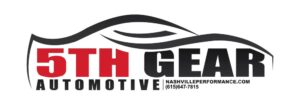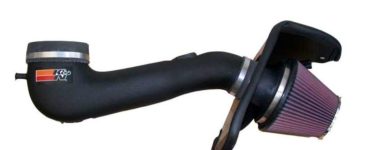3.5 Ecoboost Turbo Upgrade
The 3.5 EcoBoost engine, which is already a potent performance unit, doesn’t come cheap. The twin-turbo 3.5L V6 design is the ideal foundation for a quick and powerful Ford F-150. Many other Ford vehicles are also powered by 3.5 EcoBoost engines. With anywhere from 355 to 450 horsepower on tap, it’s already a great factory motor. Some drivers wish to take their twin turbo V 6 engine to the next level, however . A few basic 3.5 EcoBoost performance modifications can swiftly raise the horsepower of
This Ford 3.5L twin turbo Ebook is for all EcoBoost powered vehicles, including the 2003-2014 F150 with a V6 engine, 2005-2008 Explorer/Mountaineer with a 4.6L V8 engine, and any other variant of the 3.5 L twin turbo Ecosnub engines (e.g., 5.4). However, these upgrades will only work on specific years and models; exact fitment depends on which year and model you have. There are also differences between the engines that make some variants of the 3.5 L twin turbo Ecosnub more or less capable than others.

Ford 3.5L EcoBoost Engine
The Ford EcoBoost is a line of turbocharged, direct-injection gasoline engines co-developed by Ford and FEV Inc. According to Ford, EcoBoost engines are built to provide power and torque comparable to those of larger-displacement (cylinder volume) naturally aspirated engines while also reducing fuel consumption by 30 percent and greenhouse emissions by 15 percent. This new engine promises a lot of power and performance with remarkable fuel efficiency. By 2022, this technology will replace the current engines in Ford’s best-selling vehicles. It is less expensive to produce and maintain than further developing or expanding hybrid and diesel engine technologies, according to the manufacturer. EcoBoost engines are currently available in a wide range of Ford automobiles.
The Ford 3.5L EcoBoost is a twin-turbocharged V6 engine produced by Ford for use in mid-size and full-size automobiles, pickup trucks, supercars, and utility vehicles, commonly known as SUVs. The Ford 3.5L EcoBoost architecture has been part of the Ford EcoBoost family of turbocharged engines since 2010, with a V configuration dual overhead cam (DOHC) design.
The 3.7-liter EcoBoost V6 is a twin-turbocharged engine that debuted in the 2010 Lincoln MKS and has roots in the Ford Duratec 35 V6 block. The engine, which is used in vehicles like the Ford F-150, employs two BorgWarner K03 turbochargers that can spin at up to 17,000 rpm while pumping out up to 15 psi of boost. Applications that require a lot of power, like the Ford Taurus, use twin Garrett GT1549L turbochargers instead. For a maximum boost of 11 psi, such applications utilize a pair of Garrett GT1549L turbochargers, as in the case of the Ford Taurus. The 3.5L EcoBoost is the most adaptable engine in the Ford lineup because it allows it to drive a wide range of vehicle types.
This engine has undergone a major overhaul in 2015, with significant mechanical changes. Among them were the introduction of port fuel injection and electronically operated wastegates for the turbochargers. The turbines themselves were also re-engineered, with lighter wheels for improved response and steeper vane angles to allow boost to rise 2.5 psi more respectfully. Auto repair estimates and pricing for the 3.5L EcoBoost engine will be covered separately. The cam drive system was also updated, with a more durable dual-chain design taking the place of the original single primary chain. The compression ratio was increased from 10:1 to 10.5:1 (3.5 L EcoBoost High Output for the Ford Raptor remained at 10:1), and the engine’s variable camshaft (VCT) architecture was improved for enhanced long-term durability. The following vehicles are powered by the Ford 3.5L EcoBoost engine:
- Ford Explorer
- Ford Expedition
- Ford Flex
- Ford F-150
- Ford GT
- Ford Police Interceptor Utility
- Ford Police Interceptor Sedan
- Ford Taurus
- Ford Transit
- Lincoln MKS
- Lincoln MKT
- Lincoln Navigator
EcoBoost Technology
For the 2011 model year, Ford introduced the EcoBoost family of engines, which includes a range of four- and six-cylinder sizes (and even three-cylinder) and is found on everything from the tiny Focus to the workhorse F-150. The 3.5L V6, 2.3L V6, 2.7L V6, and 1.6L I4 are some of the most popular sizes. Each one has its own set of features: turbocharging and direct injection are common elements.
The turbocharger and direct injection work in tandem to improve fuel efficiency and airflow. The EcoBoost engine generates power on par with larger, naturally aspirated engines while obtaining better fuel economy due to the more air volume supplied by the turbocharger as well as enhanced fuel efficiency from direct injection. Furthermore, direct injection’s pin-point fuel delivery reduces “greenhouse gases.”
3.5 EcoBoost Horsepower
The 3.5-liter EcoBoost engine has 375 horsepower. With such tremendous power, it has already demonstrated its dependability and robustness. It also comes with a 10-speed automatic transmission. Because of the high horsepower, it can tow up to 13200 pounds and have a payload capacity of 3230 pounds. It is also capable of going thousands of miles without suffering a failure. This engine also utilizes EcoBoost turbo technology, which aids in increasing output.
Does the 3.5 EcoBoost engine consist of a turbo?
A 3.5 EcoBoost engine has two turbochargers, which is referred to as a twin-turbo system. It enhances spin power up to 1,70,000 rpm and generates up to 15 PSI of boost by doing so. This dual set of turbos is known as a twin-turbo program. It improves performance without sacrificing efficiency by including two turbos.
The effect is well-known. It improves by up to 20% in gas mileage, while greenhouse gas emissions drop by 15%. This twin-turbo gasoline V-6 engine produces 375 horsepower and 470lb/ft torque, allowing the vehicle to endure in extreme conditions.
How Does a Turbocharger Work?
The turbocharger, which was initially built in the 1930s, has revolutionized aviation. Turbochargers are now used on small planes and boats. So, what is it about a turbocharger that’s so special? Unfortunately, your car’s cylinders are limited in terms of how much air they can take in.
In the earlier days, mechanics used to make larger cylinders in order to get around it, but this resulted in heavy and unusual engine designs. And that’s when a turbocharger comes into play. When a turbocharger spins faster than the engine itself, it draws more air into the combustion chamber of the motor, allowing it to burn more fuel at higher RPMs (when going down the road).
3.5 EcoBoost Tuning Basics
Tunes are a popular performance modification on a number of engines, including the 3.5L V6, for good reason. The goal of a tune is to rewrite or change engine settings in the vehicle’s computer (ECU, ECM, DME), such as ignition timing and boost levels. Naturally aspirated engines don’t offer much power gains. Turbochargers, on the other hand, have enormous potential when paired with a tune.
Manufacturers employ too much turbo to assist with dependability, efficiency, and other factors. This implies it’s simple to boost and modify the necessary settings in order to achieve significant power increases using a straightforward tune. That basic idea is also true for 3.5 EcoBoost engines that have been modified.
At a high level, all Ford 3.5 twin turbo V6 tunes accomplish the same thing. However, the method tuners approach it may vary substantially. There’s also a difference between piggyback and flash tunes. After we get into 3.5 EcoBoost tunes vs tuners, we’ll talk about that distinction.
EcoBoost Upgrades
Cat-Back Exhaust
The turbo in the EcoBoost can develop more power by removing exhaust gases from the engine faster. We recommend upgrading your stock exhaust system with a larger diameter mandrel-bent exhaust system to minimize exhaust restriction. Diamond Eye Performance and aFe Power provide high-quality stainless steel systems that will get the job done correctly, as well as produce a louder sound. Each comes with a free-flowing muffler to allow for efficient exhaust flow so that the EcoBoost’s turbo may pack even more power-building air into the cylinders.
A 2-into-1 mitered merge collector is used by Atlas Y-pipes, which eliminate turbulence and increase flow in comparison to traditional Y-pipes. To enhance exhaust flow and maintain your vehicle street legal, these Y-pipes use a mandrel-bent design and high-flow catalytic converters. Long-lasting stainless steel or less expensive aluminized steel are available for the Y pipes.
3.5L V6 Twin Turbo Open vs Closed Intakes
We categorize intakes as open and closed. Open performance air intakes are, as the name implies, exposed to the engine compartment. A closed system, on the other hand, contains a box that protects the filter and draws in colder air. It’s an essential distinction for naturally aspirated engines, but it’s nearly meaningless on turbo engines nowadays.
Because of the heat in the engine bay, an open intake draws in somewhat warmer air. That air then goes through the turbos, which are operating at extremely high temperatures. Compressing air also creates even more heat. That’s why an intercooler is placed after the turbo to cool the heated air. The temperature of the incoming air has little impact on how effectively the intercoolers can chill it.
We like open intakes since they run smoother and we enjoy the unfiltered turbo/induction sounds. Anyways, a closed intake system will still provide comparable performance if not better. As a result, it all comes down to price, personal choice, and so on.
Twin Turbo V6 Downpipe Mods
On the 3.5 V6 EcoBoost engine, uprated downpipes (DP) are an intriguing topic. We were startled to discover so many threads and comments claiming that downpipes provide little to no performance gains. Many people in the BMW community are aware of downpipe upgrades as one of the finest easy bolt-on performance modifications available.
The downpipes connect straight to the turbochargers, which is why they look the way they do. It will offer greater power increases on the 3.5 EcoBoost than any other component of the exhaust system (except for the turbos themselves). Back-pressure behind the turbos is extremely detrimental to performance. The closer back-pressure is to the turbines,
The 3.5 EcoBoost downpipe upgrades come with a variety of benefits, including:
- 10-25+whp gains (similar torque)
- Faster turbo spool
- Lower back-pressure
- Louder exhaust
The more aggressive your tune, as well as other 3.5 EcoBoost performance modifications, the greater power you’ll get from the downpipe. With a modest tune-only, you might see increases of 10-15whp. If you’re pushing the stock turbos hard or utilizing turbo upgrades, you may see improvements of 20-25+hp. Back-pressure will also aid with lowering turbo spooling, resulting in bigger low-end torque gains.
3.5 V6 EcoBoost FMIC Upgrades
Another excellent bolt-on upgrade for the Ford 3.5L twin turbo motors is a larger front mount intercooler (FMIC). The stock F-150 3.5 intercooler is effective at low boost levels. Even so, it is still susceptible to heat soak, especially when towing or making many back-to-back pulls.
While this problem is certainly solvable, it will be much more difficult now that a tune and other modifications have increased boost. Because the turbos are so hot, the intercooler can no longer effectively cool the charge air. A simple solution to enhance FMICs on the 3.5 EcoBoost is to use larger upgrades. Cooler air is, of course, beneficial for performance and power. FMIC modifications offer additional advantages:
- 10-20whp gains
- Consistent performance
- Lower chance of engine knock
The main advantage of 3.5 EcoBoost intercooler performance upgrades is consistent performance. Have you ever noticed that after flooring your turbo engine a few times, it feels considerably weaker? That’s heat soaking in action, and the power will deteriorate as a result of the high temperatures. You may only notice improvements of 5-10 horsepower on glory runs.
A FMIC, on the other hand, will most certainly save your EcoBoost from losing power if you pull it multiple times. Cooler temperatures also aid in the reduction of engine knock, which is beneficial to engine longevity when boosted above stock levels.
The 3.5 EcoBoost engine, which is already a potent performance unit, doesn’t come cheap. The twin-turbo 3.5L V6 design is the ideal foundation for a quick and powerful Ford F-150. Many other Ford vehicles are also powered by 3.5 EcoBoost engines. With anywhere from 355 to 450 horsepower on tap, it’s already a great factory motor. Some drivers wish to take their twin turbo V 6 engine to the next level, however. A few basic 3.5 Ecoboost Turbo Upgrade performance modifications can swiftly raise the horsepowers.
This Ford 3.5L twin turbo guidance is for all EcoBoost powered vehicles, including the 2003-2014 F150 with a V6 engine, 2005-2008 Explorer/Mountaineer with a 4.6L V8 engine, and any other variant of the 3.5 L twin turbo Ecosnub engines (e.g., 5.4). However, these upgrades will only work on specific years and models; exact fitment depends on which year and model you have. There are also differences between the engines that make some variants of the 3.5 L twin turbo Ecosnub more or less capable than others.

Ford 3.5L EcoBoost Engine
The Ford EcoBoost is a line of turbocharged, direct-injection gasoline engines co-developed by Ford and FEV Inc. According to Ford, EcoBoost engines are built to provide power and torque comparable to those of larger-displacement (cylinder volume) naturally aspirated engines while also reducing fuel consumption by 30 percent and greenhouse emissions by 15 percent. This new engine promises a lot of power and performance with remarkable fuel efficiency. By 2022, this technology will replace the current engines in Ford’s best-selling vehicles. It is less expensive to produce and maintain than further developing or expanding hybrid and diesel engine technologies, according to the manufacturer. EcoBoost engines are currently available in a wide range of Ford automobiles.
The Ford 3.5L EcoBoost is a twin-turbocharged V6 engine produced by Ford for use in mid-size and full-size automobiles, pickup trucks, supercars, and utility vehicles, commonly known as SUVs. The Ford 3.5L EcoBoost architecture has been part of the Ford EcoBoost family of turbocharged engines since 2010, with a V configuration dual overhead cam (DOHC) design.
The 3.7-liter EcoBoost V6 is a twin-turbocharged engine that debuted in the 2010 Lincoln MKS and has roots in the Ford Duratec 35 V6 block. The engine, which is used in vehicles like the Ford F-150, employs two BorgWarner K03 turbochargers that can spin at up to 17,000 rpm while pumping out up to 15 psi of boost. Applications that require a lot of power, like the Ford Taurus, use twin Garrett GT1549L turbochargers instead. For a maximum boost of 11 psi, such applications utilize a pair of Garrett GT1549L turbochargers, as in the case of the Ford Taurus. The 3.5L EcoBoost is the most adaptable engine in the Ford lineup because it allows it to drive a wide range of vehicle types.
This engine has undergone a major overhaul in 2015, with significant mechanical changes. Among them were the introduction of port fuel injection and electronically operated wastegates for the turbochargers. The turbines themselves were also re-engineered, with lighter wheels for improved response and steeper vane angles to allow boost to rise 2.5 psi more respectfully. Auto repair estimates and pricing for the 3.5L EcoBoost engine will be covered separately. The cam drive system was also updated, with a more durable dual-chain design taking the place of the original single primary chain. The compression ratio was increased from 10:1 to 10.5:1 (3.5 L EcoBoost High Output for the Ford Raptor remained at 10:1), and the engine’s variable camshaft (VCT) architecture was improved for enhanced long-term durability. The following vehicles are powered by the Ford 3.5L EcoBoost engine:
3.5 Ecoboost Turbo Upgrade: EcoBoost Technology
For the 2011 model year, Ford introduced the EcoBoost family of engines, which includes a range of four- and six-cylinder sizes (and even three-cylinder) and is found on everything from the tiny Focus to the workhorse F-150. The 3.5L V6, 2.3L V6, 2.7L V6, and 1.6L I4 are some of the most popular sizes. Each one has its own set of features: turbocharging and direct injection are common elements.
The turbocharger and direct injection work in tandem to improve fuel efficiency and airflow. The EcoBoost engine generates power on par with larger, naturally aspirated engines while obtaining better fuel economy due to the more air volume supplied by the turbocharger as well as enhanced fuel efficiency from direct injection. Furthermore, direct injection’s pin-point fuel delivery reduces “greenhouse gases.”
3.5 EcoBoost Horsepower
The 3.5-liter EcoBoost engine has 375 horsepower. With such tremendous power, it has already demonstrated its dependability and robustness. It also comes with a 10-speed automatic transmission. Because of the high horsepower, it can tow up to 13200 pounds and have a payload capacity of 3230 pounds. It is also capable of going thousands of miles without suffering a failure. This engine also utilizes EcoBoost turbo technology, which aids in increasing output.
Does the 3.5 EcoBoost engine consist of a turbo?
A 3.5 EcoBoost engine has two turbochargers, which is referred to as a twin-turbo system. It enhances spin power up to 1,70,000 rpm and generates up to 15 PSI of boost by doing so. This dual set of turbos is known as a twin-turbo program. It improves performance without sacrificing efficiency by including two turbos.
The effect is well-known. It improves by up to 20% in gas mileage, while greenhouse gas emissions drop by 15%. This twin-turbo gasoline V-6 engine produces 375 horsepower and 470lb/ft torque, allowing the vehicle to endure in extreme conditions.
3.5 Ecoboost Turbo Upgrade: How Does a Turbocharger Work?
The turbocharger, which was initially built in the 1930s, has revolutionized aviation. Turbochargers are now used on small planes and boats. So, what is it about a turbocharger that’s so special? Unfortunately, your car’s cylinders are limited in terms of how much air they can take in.
In the earlier days, mechanics used to make larger cylinders in order to get around it, but this resulted in heavy and unusual engine designs. And that’s when a turbocharger comes into play. When a turbocharger spins faster than the engine itself, it draws more air into the combustion chamber of the motor, allowing it to burn more fuel at higher RPMs (when going down the road).
3.5 EcoBoost Tuning Basics
Tunes are a popular performance modification on a number of engines, including the 3.5L V6, for good reason. The goal of a tune is to rewrite or change engine settings in the vehicle’s computer (ECU, ECM, DME), such as ignition timing and boost levels. Naturally, aspirated engines don’t offer much power gain. Turbochargers, on the other hand, have enormous potential when paired with a tune.
Manufacturers employ too much turbo to assist with dependability, efficiency, and other factors. This implies it’s simple to boost and modify the necessary settings in order to achieve significant power increases using a straightforward tune. That basic idea is also true for 3.5 EcoBoost engines that have been modified.
At a high level, all Ford 3.5 twin turbo V6 tunes accomplish the same thing. However, the method tuners approach it may vary substantially. There’s also a difference between piggyback and flash tunes. After we get into 3.5 EcoBoost tunes vs tuners, we’ll talk about that distinction.
EcoBoost Upgrades
Cat-Back Exhaust
The turbo in the EcoBoost can develop more power by removing exhaust gases from the engine faster. We recommend upgrading your stock exhaust system with a larger diameter mandrel-bent exhaust system to minimize exhaust restriction. Diamond Eye Performance and aFe Power provide high-quality stainless steel systems that will get the job done correctly, as well as produce a louder sound. Each comes with a free-flowing muffler to allow for efficient exhaust flow so that the EcoBoost’s turbo may pack even more power-building air into the cylinders.
A 2-into-1 mitered merge collector is used by Atlas Y-pipes, which eliminates turbulence and increases flow in comparison to traditional Y-pipes. To enhance the exhaust flow and maintain your vehicle street legal, these Y-pipes use a mandrel-bent design and high-flow catalytic converters. Long-lasting stainless steel or less expensive aluminized steel are available for the Y pipes.
3.5L V6 Twin Turbo Open vs Closed Intakes
We categorize intakes as open and closed. Open-performance air intakes are, as the name implies, exposed to the engine compartment. A closed system, on the other hand, contains a box that protects the filter and draws in colder air. It’s an essential distinction for naturally aspirated engines, but it’s nearly meaningless on turbo engines nowadays.
Because of the heat in the engine bay, an open intake draws in somewhat warmer air. That air then goes through the turbos, which are operating at extremely high temperatures. Compressing air also creates even more heat. That’s why an intercooler is placed after the turbo to cool the heated air. The temperature of the incoming air has little impact on how effectively the intercoolers can chill it.
We like open intakes since they run smoother and we enjoy the unfiltered turbo/induction sounds. Anyways, a closed intake system will still provide comparable performance if not better. As a result, it all comes down to price, personal choice, and so on.
3.5 Ecoboost Turbo Upgrade: Twin Turbo V6 Downpipe Mods
On the 3.5 V6 EcoBoost engine, uprated downpipes (DP) are an intriguing topic. We were startled to discover so many threads and comments claiming that downpipes provide little to no performance gains. Many people in the BMW community are aware of downpipe upgrades as one of the finest easy bolt-on performance modifications available.
The downpipes connect straight to the turbochargers, which is why they look the way they do. It will offer greater power increases on the 3.5 EcoBoost than any other component of the exhaust system (except for the turbos themselves). Back-pressure behind the turbos is extremely detrimental to performance. The closer back-pressure is to the turbines,
The 3.5 EcoBoost downpipe upgrades come with a variety of benefits, including:
- 10-25+whp gains (similar torque)
- Faster turbo spool
- Lower back-pressure
- Louder exhaust
The more aggressive your tune, as well as other 3.5 EcoBoost performance modifications, the greater power you’ll get from the downpipe. With a modest tune-only, you might see increases of 10-15whp. If you’re pushing the stock turbos hard or utilizing turbo upgrades, you may see improvements of 20-25+hp. Back-pressure will also aid with lowering turbo spooling, resulting in bigger low-end torque gains.
3.5 V6 EcoBoost FMIC Upgrades
Another excellent bolt-on upgrade for the Ford 3.5L twin turbo motors is a larger front mount intercooler (FMIC). The stock F-150 3.5 intercooler is effective at low boost levels. Even so, it is still susceptible to heat soak, especially when towing or making many back-to-back pulls.
While this problem is certainly solvable, it will be much more difficult now that a tune and other modifications have increased boost. Because the turbos are so hot, the intercooler can no longer effectively cool the charge air. A simple solution to enhance FMICs on the 3.5 EcoBoost is to use larger upgrades. Cooler air is, of course, beneficial for performance and power. FMIC modifications offer additional advantages:
- 10-20whp gains
- Consistent performance
- Lower chance of engine knock
The main advantage of 3.5 EcoBoost intercooler performance upgrades is consistent performance. Have you ever noticed that after flooring your turbo engine a few times, it feels considerably weaker? That’s heat soaking in action, and the power will deteriorate as a result of the high temperatures. You may only notice improvements of 5-10 horsepower on glory runs.
A FMIC, on the other hand, will most certainly save your EcoBoost from losing power if you pull it multiple times. Cooler temperatures also aid in the reduction of engine knock, which is beneficial to engine longevity when boosted above stock levels.
3.5 EcoBoost Problems and Reliability
Is the 3.5-liter EcoBoost a reliable engine? Overall, the 3.5-liter EcoBoost has shown itself to be trustworthy in terms of dependability. Many EcoBoosts have covered hundreds of thousands of miles without ever breaking down, and they’re still going strong. However, no machine is flawless. Let’s try to make sense out of recurring issues as well as the overall dependability of the 3.5-liter EcoBoost.
Ford 3.5 EcoBoost timing chain problems
The timing chain may stretch on these vehicles if they are driven quickly enough. The problem is most common in first-generation 3.5 EcoBoost engines from 2010 through 2014, and it’s all about stretching the timing chain. The following are some of the most common symptoms that might indicate a timing chain-related issue: cold start rattle, poor driving performance, check engine light, and DTC P0016 fault code. Turbocharged engines are extremely demanding on the engine oil. Following the advice of oil change intervals (and even shortening them), which is a significant element in the longevity of these engines, may help. In addition to a faulty timing chain, worn-out oil can harm the 3.5 EcoBoost timing chain guides, tensioners, and cam phasers.
It’s a time-consuming and costly procedure to replace the timing chain and other components. The part expenses might mount up quickly. However, if an issue arises, it is better to replace the complete timing chain assembly. These issues have been addressed by Ford in a service bulletin, so you could potentially work with Ford even if your warranty has expired.
3.5 EcoBoost Carbon Build-Up
This issue with carbon build-up, like the one described above, is primarily a problem on the first-generation 3.5 EcoBoost. The next problem affects all DI engines: a build-up of carbon on the backside of the intake valves and intake ports’ walls. The oil deposits that cause soot and wear on the intake valves can be washed away by using specialised cleaning equipment.
This method removes any trapped air from inside of the vehicle’s engine components, which also serves as an effective insulating mechanism. Although port injection systems remove oil deposits from within the intake valve chambers and help to clean them, direct-injected engines have a lack of a natural cleaning process in the intake. Carbon deposits build up over time and restrict airflow into the cylinders, causing loss of power, increased fuel consumption, rough idle, engine misfires, and stuttering or hesitation. The second-generation 3.5 Ecoboost Turbo Upgrade is less prone to valve carbon build-up issues since it employs both direct and port injection.
Some 3.5 EcoBoost engines, however, are afflicted with this condition. Some engines continue to run for years without requiring intake valve cleaning. However, blasting the intake ports is not a simple task if the carbon deposits get too high. Overall, it is recommended that you clean your carbon build-up every 70,000 to 100,000 miles as part of good maintenance.
Spark plugs and ignition coils longevity
Twin-turbo, direct-injection engines put a lot of strain on the ignition system and its components. Non-modified 3.5 EcoBoost engines with stock spark plugs last 40,000 to 60,000 miles. Expect the ignition coils to survive around twice as long. about 3.5 Ecoboost Turbo Upgrade.
Summary about 3.5 Ecoboost Turbo Upgrade
The 3.5L twin-turbo V6 EcoBoost is an excellent motor for a variety of uses. It’s our favorite F-150 engine for its balance of performance, tuning potential, towing, and fuel efficiency. The engines in the 3.5 Ecoboost are already blisteringly quick out of the box. Some people feel that it isn’t powerful enough. Fortunately, a small tune-up can significantly enhance the engine’s performance.





[…] horsepower and torque mean quicker acceleration and a more responsive throttle. For example, a 3.5 EcoBoost turbo upgrade can significantly benefit from a well-calibrated […]